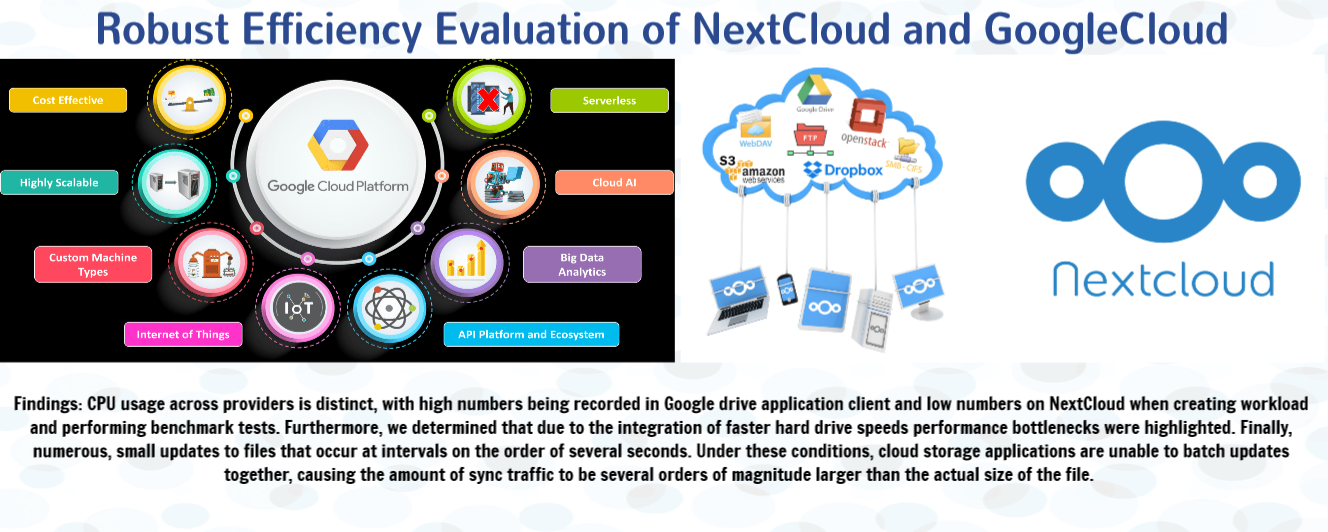Robust Efficiency Evaluation of NextCloud and GoogleCloud
Keywords:
Cloud efficiency, Data encryption, GoogleCloud, NextCloud, Security and PrivacyAbstract
Cloud storage services such as GoogleCloud and NextCloud have become increasingly popular among Internet users and businesses. Despite the many encrypted file cloud systems being implemented worldwide today for different purposes, we are still faced with the problem of their usage, security, and performance. Although some cloud storage solutions are very efficient in communication across different clients, others are better in file encryption, such as images, videos, and text files. Therefore, it is evident that the efficiency of these algorithms varies based on the purpose and type of encryption and compression. This paper focuses on the comparative analysis of NextCloud with composed end-to-end solutions that use both an unencrypted cloud storage and an encrypted solution. In this paper, we measured the network use, file output size, and computation time of given workloads for two different services to thoroughly evaluate the efficiency of NextCloud and GoogleCloud. Our findings concluded that there is similar network usage and synchronization time. However, GoogleCloud had more CPU utilization than NextCloud. On the other hand, NextCloud had a longer delay when uploading files to their cloud service. Our experimental results show that the evaluation model is considered robust if its output and forecasts are consistently accurate, even if one or more of the input variables or assumptions are drastically changed due to unforeseen circumstances.

Downloads
Published
How to Cite
License
Copyright (c) 2021 Akalanka Mailewa, Nicholas Singh, Kevin Bui

This work is licensed under a Creative Commons Attribution-NonCommercial-NoDerivatives 4.0 International License.
The Authors hold the copyright of their manuscripts, and all articles are circulated under the terms of the Creative Commons Attribution License, which permits unrestricted use, distribution, and reproduction in any medium, as long as that the original work is properly cited.
The use of general descriptive names, trade names, trademarks, and so forth in this publication, even if not specifically identified, does not imply that these names are not protected by the relevant laws and regulations. The authors are responsible for securing any permissions needed for the reuse of copyrighted materials included in the manuscript.




